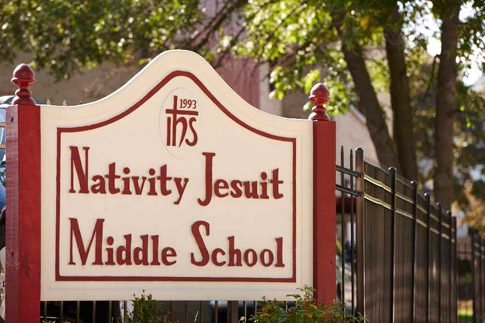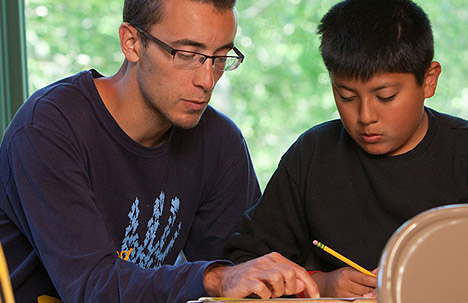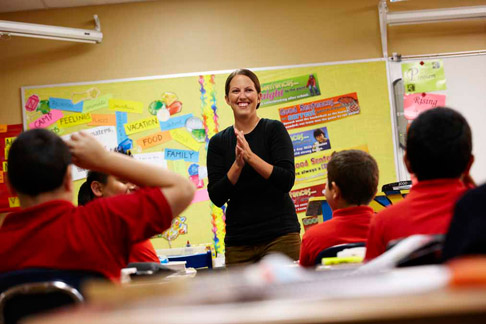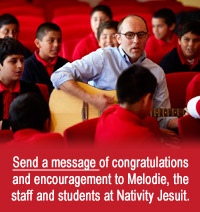News
Jesuit Nativity Middle School - Results that Speak for Themselves




|
According to the National Council of La
Raza, Latino children
and youth are the fastest-growing segment of the American population. And while
the majority of Latino youth live with two parents, they are still
disproportionately poor, and disproportionately disconnected from school compared to the wider
youth population. In 2007, 21.4 percent of Latinos ages 16–24 were
status dropouts—people who lack a high school diploma and are not enrolled in
high school.
At Nativity Jesuit, however, since implementation of a program involving financial and other support for graduates, 98 percent of alumni graduate from high school (53 percent is the national average for Latinos), and 85 percent of alumni go on to some form of post-secondary education. Results that are getting noticed Nativity Jesuit was recently selected by Seton Education Partners to be the fifth Catholic school in the country to implement its blended learning model of education. (Blended learning refers to integrating online with traditional face-to-face class activities not to just supplement, but to transform and improve the learning process, in a way that still prioritizes relationships.) “This is a very exciting opportunity for us,” says school President Melodie Wyttenbach, “as it allows us to integrate technology in a way to advance individual student learning.” “One of the greatest challenges in education is being able to reach all students in a personalized way,” she adds. “Technology has rapidly changed our world, and to be able to use it as a resource and complement to rigorous direct instruction, project-based learning, a longer school day, summer program and holistic education, we will better prepare our students for Catholic college preparatory high schools and post-secondary success.” |
|
|
|
|
|
|
|